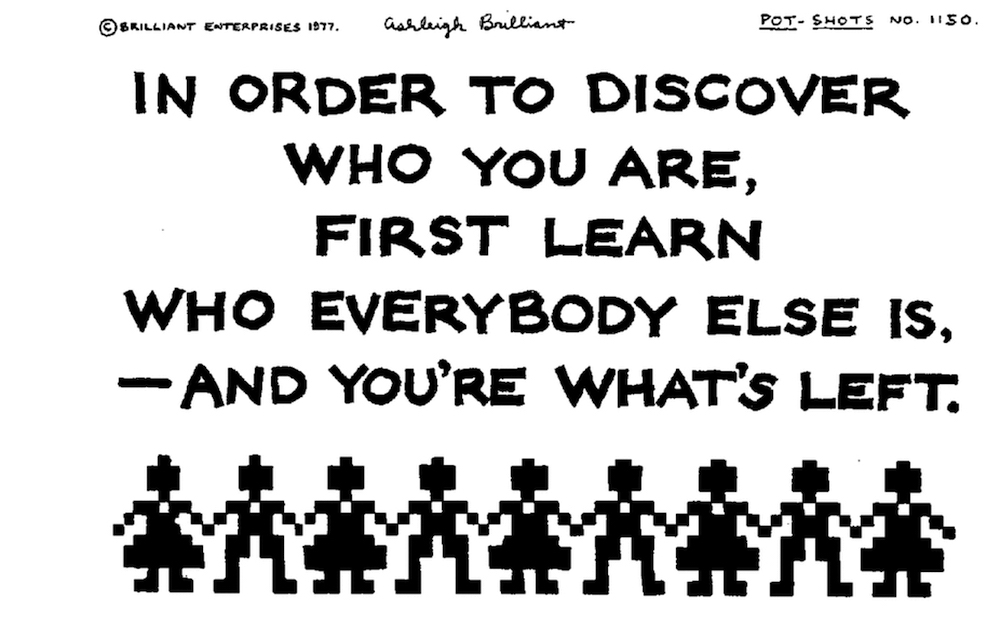The Way it Was

In the now-almost-forgotten days when many of us regularly watched an early evening network newscast, Walter Cronkite, who was then recognized as the Dean of American Newsmen (there were very few newswomen), used to sign off his report with the words, “And that’s the way it is…” To me, and perhaps to many other members of his audience, there was something reassuring about these words. At least, there was somebody out there who knew the score, and could tell it like it is (or was).
Reality is never easy to pin down. Before you know what’s going on, a new reality has been slapped down over it. I remember a cartoon, possibly in The New Yorker, which showed a man who has got up from his sofa and is pointing angrily at the TV screen, shouting “No, Walter – that is not the way it is!”
Without any doubt, there are always many ways that it could be. This concept intrigued me even as long ago as 1945, when I was 12 years old. And I cannot resist sharing with you something I wrote then (which has never been published before):
THE WAY AHEAD
When the burden’s getting heavy
And your soul is nearly dead,
Don’t give up in the middle,
For there’s still the way ahead.
When happiness departs from you
And sorrow comes instead,
Cheer up, don’t be downhearted,
For there’s still a way ahead.
And when death comes to take you,
Don’t think that life has fled,
Go forward bravely, boldly –
For there IS a way ahead.
Somewhere along the way from then to now – I seem to have become considerably less confident about the future. But, for better or worse, I now have much less future to be confident about.
There are of course many different ways of saying “that’s how it is.” One, which may have bounded out of basketball, says: “That’s the way the ball bounces.” Another, perhaps cooked up in a kitchen, declares: “That’s how the cookie crumbles.” They both look to our linguistic love of alliteration.
And many proverbs are also on the “way” – as, for instance, “Where there’s a will, there’s a way” – which, however, leads in a legalistic (if not grammatical) direction, to “Where there’s a will, there’s relatives.”
And then we have catch-phrases, like “My way or the highway” – which can’t help but remind us of Frank Sinatra’s musical reminiscence (written by Paul Anka) about how “I did it my way.” We are moved to admiration by those proud and defiant words:
Yes, there were times I’m sure you knew
When I bit off more than I could chew
But through it all, when there was doubt
I ate it up and spat it out
I faced it all, and I stood tall,
and did it my way.
But when it comes to leading a nation, or any group of people, how can anyone know the right way? The choice always seems to be between the extremes of boldness and caution. On the bold side, Julius Caesar, in 49 B.C., leading his army in rebellion to take command at Rome, dared to cross the Rubicon River, which was the boundary of the Roman Republic, and thus bring on a civil war. On this occasion, he is said to have uttered the words, “Alea iacta est,” a gambling metaphor, meaning “I have thrown the dice.” In other words – “I am taking the big chance.” (But he thereby gave us a useful expression meaning “to take an irrevocable step”: to “cross the Rubicon.”)
As for caution, we may cite the case of Neville Chamberlain, the British Prime Minister, who in 1938, to avoid a war with Hitler, flew to Munich, and there negotiated concessions to the Nazis – mainly letting them march into Czechoslovakia – which were later bitterly regretted. Yet, at the time he was greeted at home as a great leader, who had brought what he said he believed was, “Peace in our time.” (The Second World War began in the next year, with another Nazi march, into Poland.)
Of course, no way is more important than the way home. But that is not always easy, nor is the homecoming always happy. Hansel and Gretel almost didn’t make it out of the forest because the trail of breadcrumbs they’d left was eaten by the birds. And, although getting home took Odysseus 10 years, when he arrived, he was recognized only by his dog.







